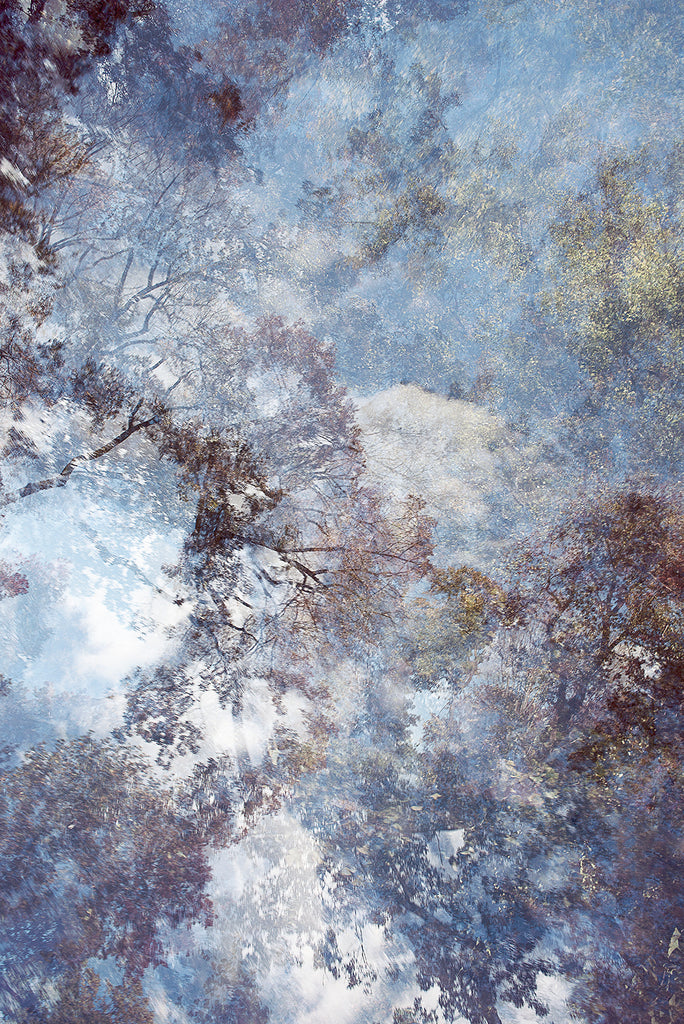
INTERVIEW
Photographer Tomoko Iki
The capsule collaboration collection with Tomoko Iki was created to commemorate the 10th anniversary of the founding of SAYAKA DAVIS. We interviewed these two close friends and mutual admirers about this collaboration as well as future creative endeavors.
Tomoko Iki combines photography and dance, two artforms with different approaches, into fantastic works of multiple exposures. In her "DANCE" series, she dances in nature, and by layering her photography with light, she questions what she can see and what nature and human beings are.
Visualize what I want to express. I choose photography as a tool for it.
Sayaka Tokitomo Davis (Sayaka): I am curious about what your childhood was like and how you came to create the work you do today. What were you passionate about as a child?
Tomoko Iki (Tomoko): When I was a child, I loved plants and often tinkered in the garden with my grandmother, who lived nearby. I have fond memories of the time I spent with her, learning the names of plants and excitedly looking forward to seeing the fruit on the princess apple tree. In spring, daffodils and roses bloomed and in my grandmother's garden, where I could enjoy the flowers of the four seasons, I was able to experience the changing seasons and the workings of nature.
Sayaka:Whenever talking with you, I feel that you place great importance on your connection with nature in both your artwork and your child-rearing; perhaps it is this childhood experience that has led you to where you are today. Were you interested in photography from a young age?
Tomoko: I first became interested in photography when I was in high school. I liked painting and I did oil paintings from elementary school through high school. I had a desire to create something visual. But with oil painting, you have to put on layers of paint, wait for it to dry, and then put on layers again, so it is not possible to immediately give form to what you want to express. I wanted to visualize what I wanted to express immediately and I wanted to give it many forms. So I thought "What about photography?” My grandfather on my mother's side was a photographer as a hobby, so cameras were a familiar part of my life. At the time, toy cameras called Holga were all the rage, and I bought one and started taking pictures without any knowledge or skills. I wanted to go to art school or a photography college, but my parents were against it. So I went to an interior design college instead.
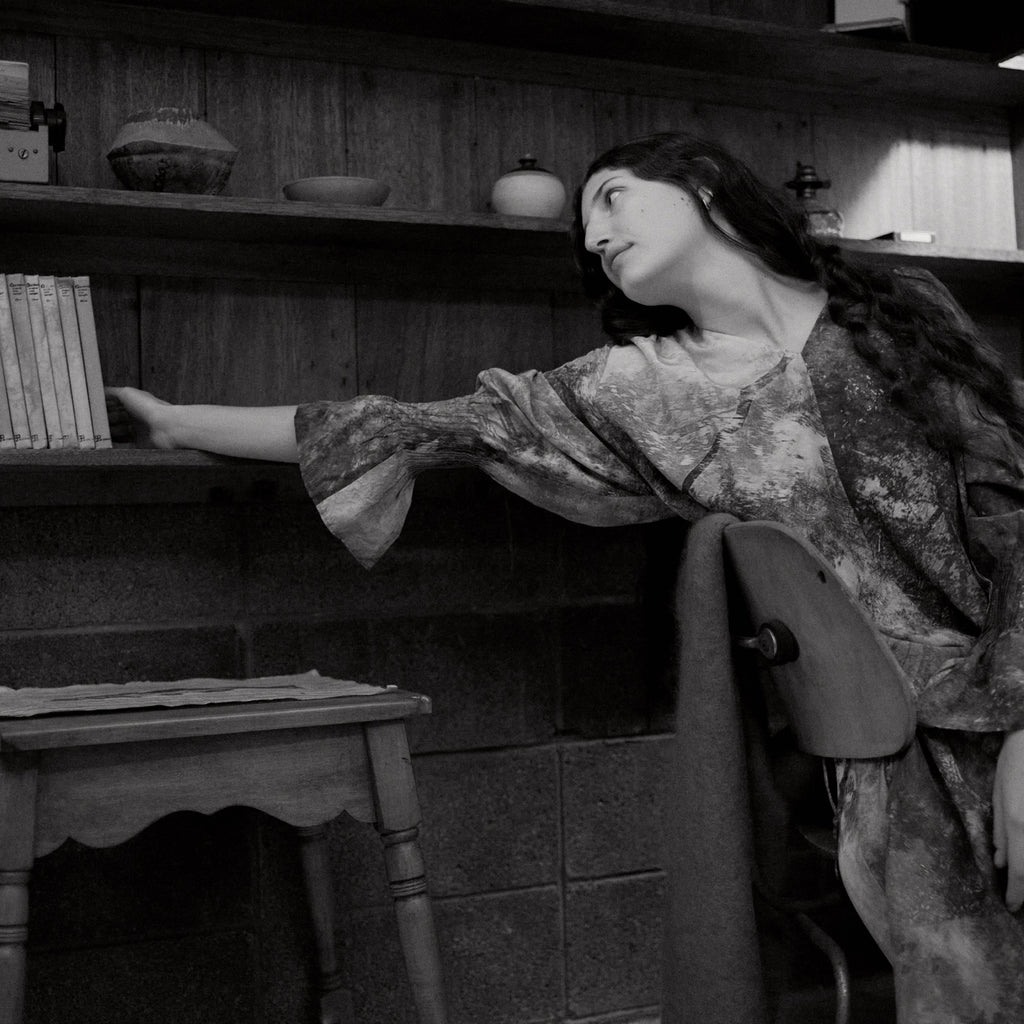
Sayaka: What was photography like for you when you were in college?
Tomoko: I went to a women's college, but at the time the architecture industry was dominated by men. Only a few women, no matter how talented, could find work at architecture firms. When I thought about what I wanted to do again, before job hunting, photography was the one thing that stuck out to me. I received a digital single-lens reflex camera as a coming-of-age gift and started working part-time at a photo shop. It was the first time I learned about photography as a job and I was struck by how cool it was. I assisted several photographers, learning about lighting and other techniques at various sites, while also working part-time at a photo studio and contacting and talking to photographers I was interested in through SNS. Once I mastered technique, I was able to realize what I wanted to express, and I began to enjoy photography more and more. By the time I graduated from university, I was gradually getting work. My parents were opposed to me becoming a freelance photographer without finding a job, but I asked them to let me do it for just one year and... here I am today. At first, I experienced various types of photography while building a financial foundation through bridal work.
Sayaka: It's amazing that you started photography in earnest when you were in college and by the time you graduated, it had led to work. It always seemed to me that commercial photography and art photography are two different genres. When did you first become interested in using photography as your own method of expression?
Tomoko: At first, I just wanted to acquire the skills and take the photos that my clients wanted and make a living as a photographer. However, as I continued to take the photos based on customers’ needs, I began to wonder what my photos were about. When I took a pause and began to remember what I wanted to do when I was in college, "photography and dance" came to mind.
Dancing myself...the world of dance that I immersed myself in as if I was being pushed by the world of dance
Sayaka: What made you start dancing?
Tomoko: I thought I didn't really like dance because of the image of dancing to choreography, but right around the same time I started photography, I began learning belly dance, influenced by movies. A dancer friend I met there taught me, "Don't get caught up in the choreography; just dance yourself. When I danced like that, I realized that dancing is an instinctive desire that we all have, just like eating a meal and I began to dance as if I were motivated by something spiritual. I found my own style by getting together with friends who had the same feeling and dancing, and also by attending workshops of dancers who matched my feeling.
There were times when I would go on stage or perform in shows, but unlike photography, I did not want to make it my profession, so I think I was able to immerse myself in the sensuality of it. If you call people who are paid to dance on stage dancers, then maybe I am not a dancer. But I believe that everyone is a dancer and everyone can dance and has a fundamental impulse to dance. Through such experiences as being liberated by dancing, connecting with sensations I had never noticed before, and connecting more deeply with myself, I feel that I am coming closer to the style I want to express. The awareness I have while moving my body is direct and strong. I sometimes wonder if it is similar to meditation.
Sayaka: I have been interested in dance and I tried to learn. At the time, I felt overly self-conscious and stuck, but I always had a desire to dance freely, being myself.
Tomoko: Dance could change depending on the ability of the teacher. Through repeated experience, you will be able to connect with the music. A good teacher brings out the best in you. It is truly wonderful, but hard to find someone who can dance in complete agreement with himself/herself beyond his/her trained technique, because it is not easy. In both dance and photography, there is a point at which the acquisition of technique narrows one's expression. How flexibly can you jump over the assumption that you cannot do something that you are knowledgeable about? It may not be possible for everyone to express themselves beyond training, but I would like to continue both dance and photography as tools to connect with myself.
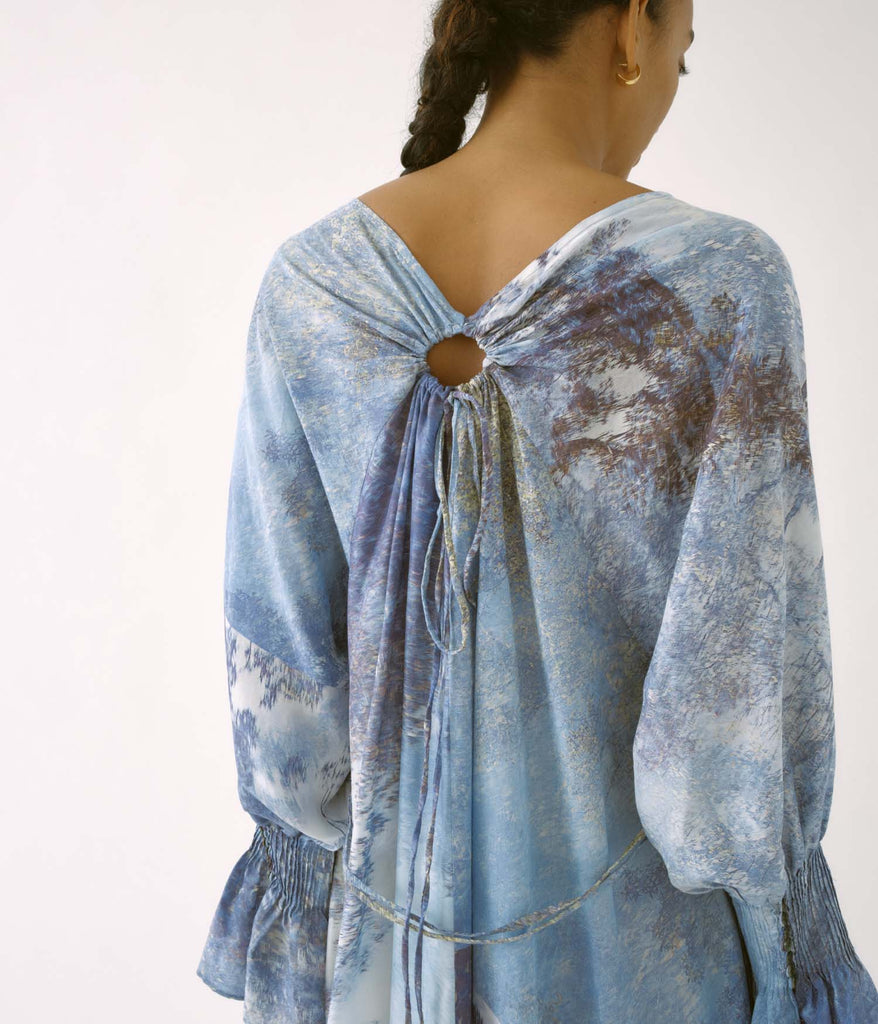
Sayaka: What does it feel like to connect with yourself?
Tomoko: I think it is a feeling similar to a trance. I wonder if the Bon-Odori(Japanese traditional dance for Summer festivals), or dancing the same dance for a long time, was a way for people in the past to connect with invisible fears, prayers, and something unseen. I think everyone feels differently, but in my case, there are moments when things that I agonize over day after day become clear to me, or when I feel a part of the Earth, and that gives me joy.
Sayaka: Is it because you are directly connected to your body that you are able to pull yourself away from reality and bring yourself into a meditative state by repeating the same physical movements? Are there moments in photography when you feel the same way?
Tomoko: Photography is not like dancing because you are holding the camera to create a picture. In dance, you can concentrate only on what you feel. I want to visualize the sensations I get from dancing. It was with this in mind that I began shooting "DANCE”.
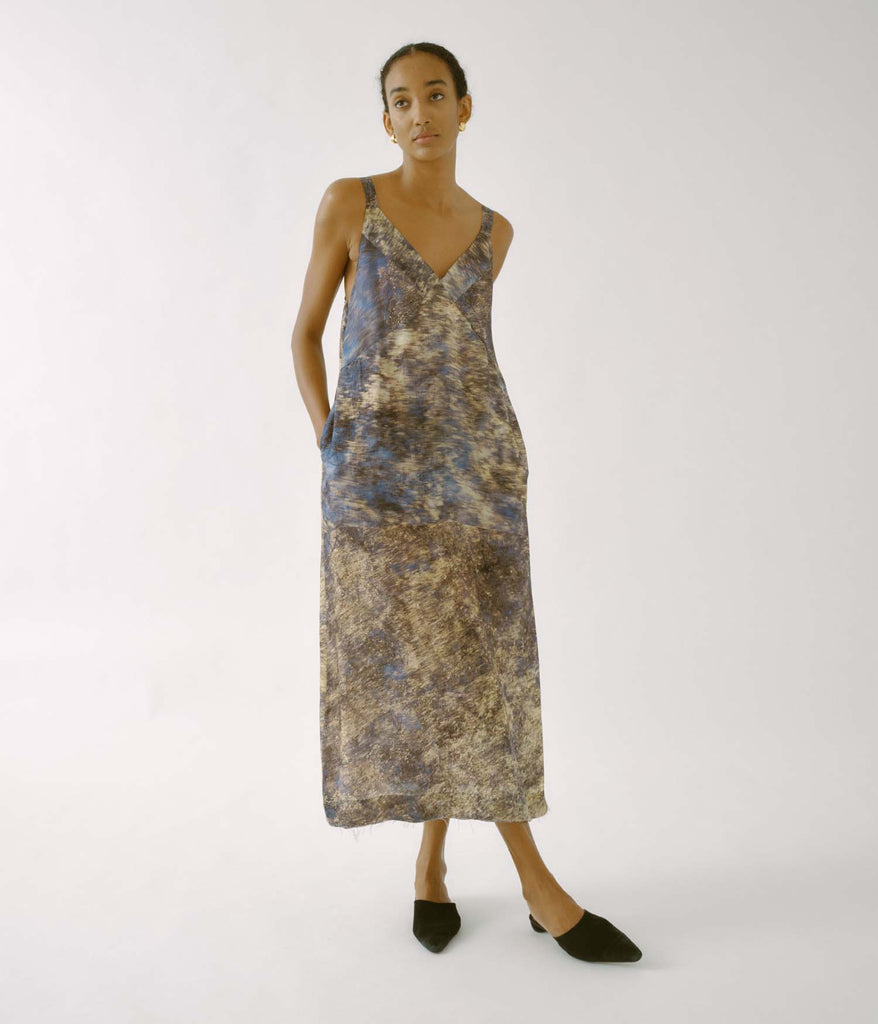
Leaving Photography as a Job and Facing Myself in N.Y.
Sayaka: For SAYAKA DAVIS' 10th anniversary collaboration, we printed Tomoko's multiple-exposure photography work "DANCE" on fabric and made it into a capsule collection. What was the impetus for you to start taking this work?
Tomoko: Due to my husband's wishes, I moved my base to New York from the fall of 2015 until 2019, and it was just when I wanted to take a breather emotionally. I wanted to stop everything and have some time to myself
When I arrived in New York and got on the train after leaving the airport, I was impressed by the fact that everyone on the train was of a different race. I thought, "There are conflicts going on all over the world, but in NY, people from all over the world are riding in the same train like this and I wondered what kind of person I am. At the same time, I wondered what kind of human being I am. In order to live here, I wanted to do what I want and to understand what kind of person I was. I feel that the environment of New York encouraged me to do so and the people I met in New York, including Sayaka, were all people who were living their own lives. I strongly felt that I wanted to live my life in that way. I think that is what made me want to deepen my own expression.
Sayaka:People in NY have great energy. I resonate with your feeling that being exposed to that passion made you think about who you are and what you want to do.
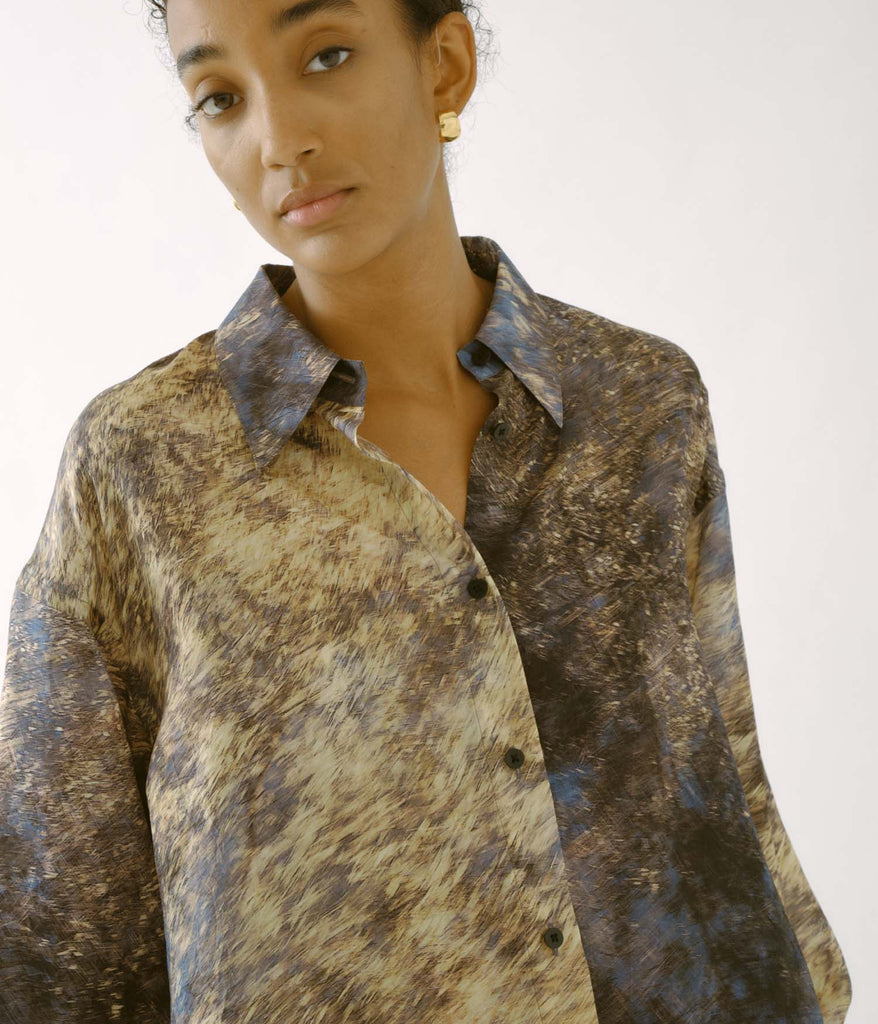
Expressing an invisible sensation, a sense of oneness with nature, by taking multiple photographs
Tomoko: When I wanted to express myself, I thought it would be interesting if I could express that sense of oneness with nature that comes from dancing, the feeling of dancing with nature, through photography. And I arrived at the multiple exposure technique of layering photographs taken while dancing and moving.
Sayaka: When you were shooting “DANCE”, did you have some idea of what the finished product might look like? Or did you just press the shutter as your body moved?
Tomoko: It was a bit of both. As I have gained experience, I have, recently, come to be able to do things that are closer to what I expect to happen. On the other hand, there are parts of a photograph that I can't capture even if I aim for them; and no matter how long I keep shooting, I will come up with pictures that I have never seen before. There are tens of thousands of possibilities of what could happen if I shoot at this speed, this many times, so I never get bored and I keep shooting with the feeling that there is something more to come.
Sayaka: When you shot your first "DANCE" piece, did you feel as if you had clicked onto something that you knew was "it"?
Tomoko: I had always wondered how I could express what I couldn't see and what I felt in dance, but I did have a sense of "ah, this is it.” I could interpret my own movements into the image, and it stimulated viewers’ imaginations like “what is this? How was it taken?” I think I have found a method through which I can express a familiar ambiguity with a sense of oscillation. What we see with our eyes at this moment has many layers in the past and nature exists as a long accumulation of layers. I believe that the technique of taking multiple photographs in motion has something to do with this.
Sayaka: Do you want to continue working on "DANCE" in the future? What are your future visions?
Tomoko: After returning to Japan in 2019 and having a baby, I was busy with child-rearing and work. Covid also kept me from leaving Japan, but now I have a strong desire to shoot works abroad again. I was very happy to collaborate with Sayaka, as I felt that you breathed new life into my work. I feel that I have received many gifts through "DANCE" and I would like to continue to use it as a way to express myself in the future.
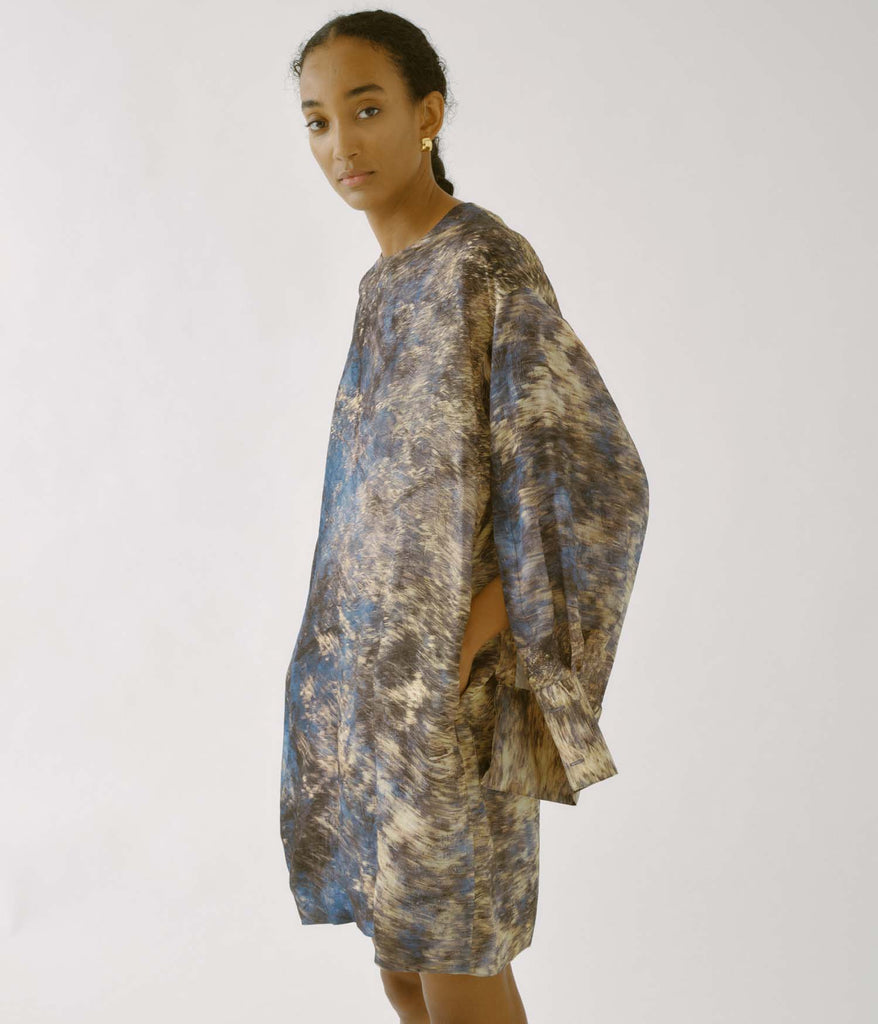
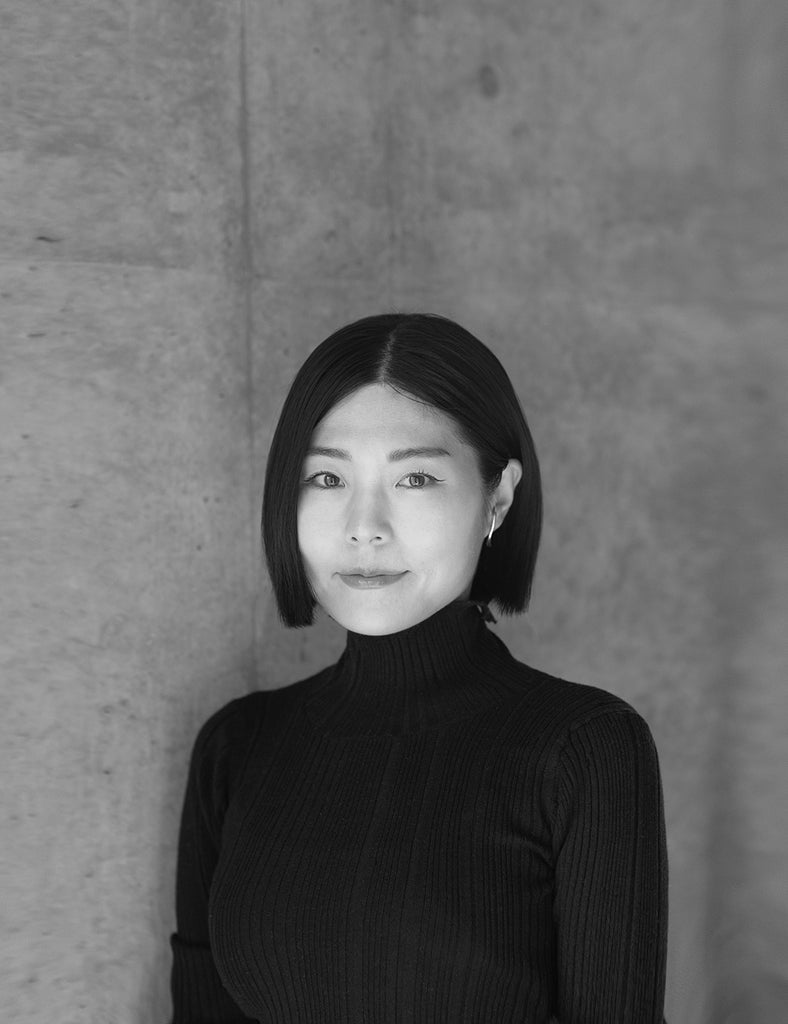
Photographer
Tomoko Iki
Tomoko Iki was taken with the desire to do photography and dance at the same time in her life. For her, these are two sides of the same creative force and they mutually inform one another. Her dance influences her photography. Through dance she explores her own spirit. It is a meditation and ritual in which she offers herself to nature. Dance has revealed to her a deep sense of her own femininity as well as the ancient human desire to connect with the divine. With her photographs, she tries to convey this universal desire and how movement through dance moves us forward toward truth.
Instagram:@ikico / HP:tomokoiki.com
